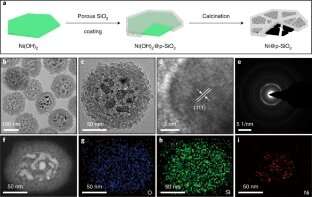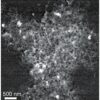September 2, 2021
feature
Over the past few decades, scientists worldwide have developing a variety of techniques and technologies that can convert carbon dioxide (CO2) into fuel using solar energy. This would ultimately be highly valuable, as it would diminish human reliance on fossil fuels and help to mitigate climate change.
One existing approach to convert CO2 into fuel is called photothermal CO2 catalysis. While this method has achieved encouraging results, to reach an optimal performance, it may require new materials that are more suited for harvesting solar energy.
Researchers at Soochow University in China and University of Toronto in Canada have been conducting research aimed at reducing the emission of greenhouse gas CO2 for several years now. In a recent paper published in Nature Energy, they introduced a new approach to achieve supra-photothermal CO2 catalysis that draws inspiration from the greenhouse effect itself.
“The idea for this paper arose during a chat among us,” Le He, one of the researchers who carried out the study, told TechXplore. “We were talking about how greenhouse gases warm the Earth and one of us raised the question: Why don’t we use the greenhouse effect to enhance the photothermal efficiency of catalysts? The main objectives of our study were to verify our hypothesis by designing this core-shell structured catalyst.”
After discussing their initial idea and hypotheses at length, He and his colleagues tried to verify their validity in the lab. This led to the development of a greenhouse-effect-inspired supra-photothermal catalyst architecture that could boost the performance of catalysts for CO2 hydrogenation.
The catalyst created by He, Zhang and their colleagues consists of a nonporous-silica-encapsulated nickel nanocrystal. Notably, this nanocrystal engages in both methanation and revere water-gas shift reactions.
“Our catalyst has a silica shell that plays an essential role in reducing the heat loss from the hot Ni core and avoids catalyst deactivation resulting from sintering and coking of Ni nanoparticles,” Xiaohong Zhang, another researcher involved in the study, told TechXplore. “In other words, one could say that our design kills two birds with one stone.”
The researchers tested the performance of the catalyst they created in a series of experiments and compared it with that of traditional photothermal catalysts. They found that under illumination, the local temperatures achieved by their catalyst significantly exceeded those of other Ni-based catalysts without a SiO2 shell.
“Besides the new knowledge it brings, our study shows that it is now possible to convert CO2 and renewable H2 into valued chemicals and fuels with an unprecedented rate and robust long-term stability based on cheap and earth-abundant elements,” Geoffrey A. Ozin, one of the researchers who conducted the study, told TechXplore. We believe that this represents a key step towards a sustainable solar fuels industry.”
In the future, the innovative greenhouse effect-inspired catalyst architecture developed by this team of researchers could play a role in reducing the emission of CO2 worldwide. Meanwhile, He, Zhang, Ozin and the rest of their team plan to continue testing their catalyst, while also trying to improve its design further.
“We are now working on new studies aimed at gaining a more in-depth understanding of the light effect, as well as on optimizations of the catalytic performance,” Geoffrey A. Ozin, one of the researchers who conducted the study, told TechXplore. “Particularly, we would like to improve the product selectivity to reduce the cost of post-separation.”
Breaking ammonia: A new catalyst to generate hydrogen from ammonia at low temperatures
More information:
Mujin Cai et al, Greenhouse-inspired supra-photothermal CO2 catalysis, Nature Energy (2021). DOI: 10.1038/s41560-021-00867-w
2021 Science X Network
Citation:
A supra-photothermal catalyst inspired by the greenhouse effect (2021, September 2)
retrieved 3 September 2021
from https://techxplore.com/news/2021-09-supra-photothermal-catalyst-greenhouse-effect.html
This document is subject to copyright. Apart from any fair dealing for the purpose of private study or research, no
part may be reproduced without the written permission. The content is provided for information purposes only.



